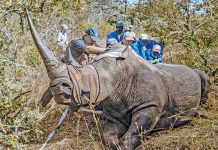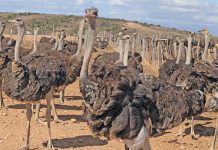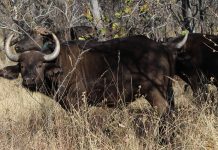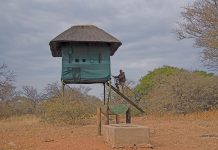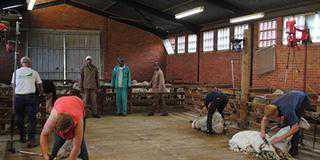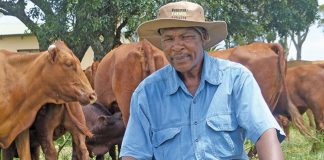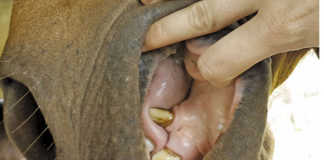The following is a summary of a draft document that regulates driver behaviour and vehicle specifications for transporting game.
Document specifications
The recently-released draft document on a proposed South African standard governing vehicles that transport game by road, published by Standards Africa and approved by StanSA’s steering committee for nature conservation: translocation of wildlife, covers not only specifications of vehicles and trailers fitted with fixed or detachable mass or individual crates, but also driver behaviour. H ere are some of the recommendations:
Transporting game in containers
Wild animals should be transported only in containers specifically designed and prepared for that purpose, but game that have been anaesthetised or chemically immobilised may be transported in a conventional vehicle, provided that the procedure is supervised by a veterinarian.
Vehicles have to comply with this standard if they are used to moving animals by road between the point of capture and temporary holding pens, game auction pens, quarantine facilities or a release site.
Cattle or sheep trucks shall not be used, unless they have been appropriately modified to comply with the requirements of this standard. Multi-deck vehicles are prohibited.
READ: Adding value to game ranches
No part of a container shall be manufactured or modified by the use of temporary material such as wire mesh, netting, canvas, shade cloth, wooden or metal poles, or galvanised sheeting. The materials used shall be able to provide protection for the animals against wind, rain, heat and cold.
Walls, doors, compartments, roofing and hatch covers shall be so constructed, and of such materials as to eliminate, or at least minimise, vibration noise or rattling while driving on rough and corrugated gravel roads.
The floor area shall be suited to the maximum number of individual animals of a particular age or height class that the vehicle is designed to transport, and must enable each animal to lie down comfortably. However, a compromise is necessary between enough space for the animals to move around and avoid dominant individuals, and too much space that might result in the animals being thrown off balance and falling due to braking and turns.
All floor surfaces (including loading ramps) shall be of a non-slip nature. Wood shavings may be used to cover the floor, but sawdust is prohibited.
Minimising heat and cold
To reflect heat, the exterior of the vehicle should be of a light colour. The roof of all mass crates or containers must have openings or hatches for ventilation, observation and easy access from above.
Tarpaulins may only be used for protection when vehicles are stationary, since they cause undesirable flapping when the vehicle is in motion. But in extreme cold, tarpaulins may be used to cover vehicles in motion, where the extra protection would outweigh the detrimental effect of flapping.
Temperature-monitoring equipment and video cameras are encouraged, and a dull red light should be fitted in the container to allow observation of the animals at night. white light should also be fitted to provide illumination in emergencies.
An additional reserve fuel tank should be fitted to the vehicle, ideally to double the fuel storage capacity. At least one permanently attached ladder shall be provided on the side of the vehicle to allow easy access to the roof area.
Size of the crate
The width of the individual crate shall be such to enable the animal to lie down comfortably, and is either unable to turn around in the crate, or if able to do so, then is able to turn around completely without becoming stuck. (guide to generally accepted sizes for individual crates for transporting various species of antelope is available.)
The vehicle should carry a complete tool box as well as a standard medical first aid kit suitable for the treatment of small wounds or abrasions, and a veterinary drug box, the type, size and contents of which shall be decided by a veterinarian who is competent in wildlife translocation.
Adult male animals shall be transported individually. Juvenile males may be transported with females, but care shall be taken that small animals cannot be injured by larger ones.
Travel distance
When transporting game over long distances that require several days’ travel, the first stop shall be made within an hour after departure to check the condition of the animals.
Stops shall be made regularly thereafter at intervals of three to four hours to ensure that the animals are well and calm. All stops shall be made on a level surface and inspections using inspection hatches shall be done in such a way as to minimise disturbance to the animals.
For journeys of less than 24 hours, feeding and watering en route is not necessary; however feeding (with an appropriate feed) is essential in the event of unexpected delays.
Fixed water containers are not permitted within the compartments as they might injure the animals. Any water spillage (which might cause animals to slip, with resultant injuries) shall also be cleaned up before resuming the journey.
Animals shall not be transported over long distances in extremely cold conditions as hypothermia can occur even at low speeds.
READ: Escaped game is not yours to shoot
The normal body temperature of most wild herbivores is nominally 38,5°C. This can increase due to fear or stress (for example, auctions, feeding or the presence of humans) to as high as 44°C (at which point the animal will die), or it can fall as low as 35°C due to low ambient temperature, draughts, dampness, and so on (at which point the animal will also die).
Responsibilities of owners and drivers of transport vehicles
Owners and drivers of transport vehicles must ensure that the journey and travelling conditions to which an animal is subjected shall be of such a nature as to minimise discomfort and avoid suffering or stress. Owners of vehicles must ensure that their drivers are sufficiently trained for this.
Once the animals have been loaded, the transport vehicle shall depart with a minimum of delay and follow the shortest practical route to the destination.
For journeys that will exceed an eight-hour duration, two drivers shall be used. It is also recommended that a competent assistant accompany the drivers to help with care of the animals, opening and closing of gates and so on.
The driver shall ensure that he is equipped with suitable road maps and information on preferred routes and road conditions, and that his communication equipment (for example, cellphone) is in working order.
Stops should be made at quiet places, preferably away from inquisitive onlookers.
Comments on the draft must contain in its heading the number of the clause/subclause to which it refers. Comments must be well motivated and, where applicable, contain the proposed amended text. The public enquiry stage will be repeated if the technical committee agrees to significant technical changes to the document as a result of public comment. Less urgent technical comments will be considered at the time of the next amendment.
Comments can be sent to: Standards South Africa, attention: Compliance and Regional Policy Department, Private Bag X191, Pretoria, 0001; fax (012) 344-1568 (for attention: dsscomments); or e-mail [email protected].

